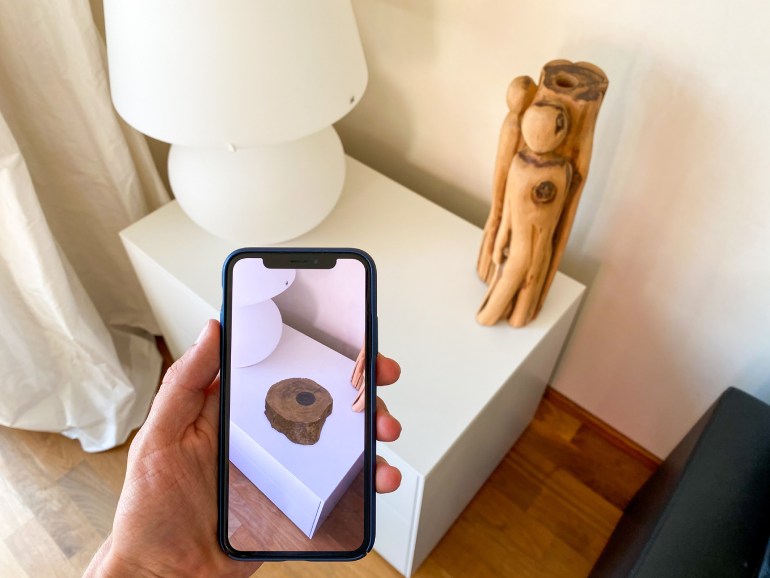- Category: July 2021 - Mobile Marketing & Analytics
 The growth of online shopping has undeniably disrupted bricks-and-mortar retail, but mobile technology is coming to its rescue.
The growth of online shopping has undeniably disrupted bricks-and-mortar retail, but mobile technology is coming to its rescue.
According to the study “The Connected Shopper”, published by Foresight Factory in collaboration with Snap, the combination of a digital and physical experience in-store is becoming a key factor in luring people back to shopping centers after retail store closures, stay-at-home restrictions, and social distancing measures due to the coronavirus pandemic.
“A new image of shopping has emerged which clearly shows that rather than existing separately, physical stores and e-commerce increasingly cross over and there is huge opportunity for everyone where they meet”, Dominic Harrison, Director of Global Trends at Foresight Factory states.
All in all, 20,000 consumers from across 12 global markets have been surveyed to find out how their shopping behaviours have been impacted last year, revealing the importance of mobile and AR to survive and thrive in a ‘connected’ in-store and online world.
Key findings of the report include:
- Mobile devices are increasingly becoming the core tool connecting consumers throughout all aspects of their shopping journeys, helping to optimize choice, aid discovery and facilitate social interaction: mobile is already the preferred channel for 34% of global consumers when shopping for products, second to shopping in-store at 43%, and stretching ahead of shopping on PCs at 23%. Not to mention that mobiles are also a popular companion tool to stay connected in-store, comparing prices, phoning friends, sharing photos, and finding out more about what’s on physical shelves in real time. The opportunity for retailers is in harnessing the power of mobiles in-store, to keep connected shoppers informed and entertained within their brand ecosystem, since mobile phones have become an extension of the physical retail store.
- Shopping with AR will surge by 2025, demonstrating its commercial clout and proving that it can move consumers closer to the checkout. Already 16% of shoppers globally have used AR in the shopping process. But while necessity might have fuelled AR trial for many in the last year, more consumers are now actively seeking out AR as a viable alternative to real-life retail: 2 in 5 shoppers expect AR to be available when shopping in the next year, and 3 in 10 prefer to try on clothing items using AR rather than having to go in-store. The findings showcase the vital role that AR can provide in supporting product interaction across the shopping journey and the direct impact on retail sales, with more than half of global consumers who have used AR saying that it encouraged them to make a purchase. Hence, retailers not utilising AR technology run the risk of not meeting consumer expectations and missing an opportunity to nudge shoppers closer to the checkout with an enhanced shopping experience offering the benefits of in-store retail at home.
The study makes clear that it is high time to prepare for the virtual economy boom: e.g., to provide consumers with immediate access to inventory information before they go to a store. Gen Z and Millennial buyers anyway use their mobile phone to purchase products, while stating that they never go shopping without a smartphone. Besides, the young target group has not only gotten used to augmented reality (AR), but will also be demanding this service for themselves in the future.
For instance, one third of consumers would still go to a shop if there were interactive, virtual services such as an intelligent mirror with which they could try on clothes or make-up. This shows the role advanced retail technologies can play in enhancing the in-store shopping experience and increasing customer footfall. Around 50% also state that the inability to see, touch and try out products are the most important factors preventing them from shopping online. This shows how important new options for product previews and testing via online channels will be for an optimized experience. Hence, the digital showroom is just the beginning: around three quarter of Gen Z and Millennials would consider buying a virtual product, suggesting a significant expansion of the virtual economy in the next decade.
The exclusivity that non-fungible tokens (NFTs) offer will increasingly be an important unique selling point for virtual products. We are talking about a unit of data stored on a digital ledger, called a blockchain, that certifies a digital asset to be unique, and therefore not interchangeable. NFTs enable consumers to own unique pieces regardless of their physical existence and encourages spending money on exclusive brands.
Essentially, the study shows that despite the many challenges retail stores worldwide are facing, digitization can be a powerful tool to lure people back into stores or to build new business models.
By Daniela La Marca


